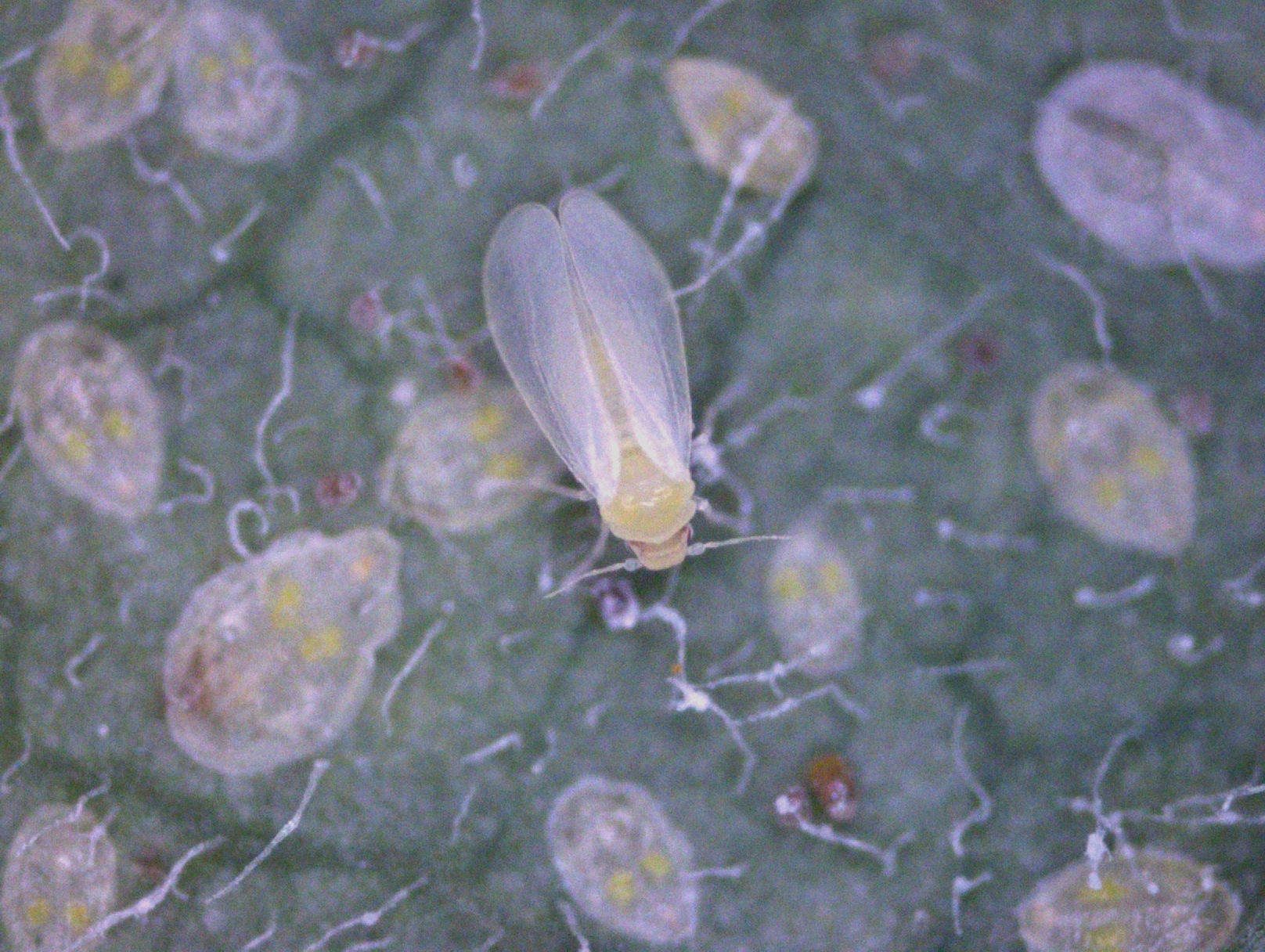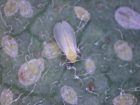
Features
Biocontrols
Inputs
Timely tip: Assessing whitefly pressure in poinsettia
September 3, 2019 By Dr. Sarah Jandricic

If you started out using biological control for whitefly in your poinsettia crop this year, you’ve now reached a crucial tipping point. Based on the size of your Bemisia whitefly population in mid-late September, your populations could end up being too high by November to effectively bring under control. Ultimately, this could affect sales.
So, do you keep going, and hope for the best? Or switch horses mid-stream, and start using chemicals?
The first step is to assess your whitefly pressure. For those of you regularly implementing biocontrol for Bemisia in poinsettia, hopefully you’ve already figured out that monitoring is your best friend when it comes to making sure your program is working.
If you’re not already doing it, now is the time to regularly collect presence-absence data of whitefly in your crop. Recording presence-absence data, instead of counting the number of whiteflies per plant, makes the process much faster, but still informs decisions.
To do this, pick up 15 to 20 plants per bench on at least 50 per cent of the benches in your compartment. Hold the plants above your head so you can see the undersides of as many leaves as possible, then score the whole plant as “with whitefly” or “no whitefly.” Any stage of whitefly, including nymphs, pupae or adults, counts as “with whitefly.” Eggs, unfortunately, are too small to see without a hand lens. Plants with high whitefly numbers (e.g. densely populated leaves, or quite a few infested leaves per plant) should also be noted, as should the variety. You should also flag these plants, as they can indicate the efficacy of control tactics going forward. Once this is done, add up the number of infested plants and divide this by the total number of plants you sampled. (You can do this for each compartment or each variety you grow, since varieties can attract whitefly differently). Multiply this number by 100 to get the percentage of infested plants.
For example, if 20 plants were sampled per bench in a compartment with 30 benches, and a total of 55 plants were found with whitefly, then the % infestation rate for that compartment would be: (55/(20×30))x100 = 9.2%. This technique is quick but can give you a picture of the whitefly pressure across your whole farm.
Once you’ve calculated the per cent infestation, the next question is, how much is too much? Although there’s no strict cut-off, growers and consultants who’ve been in the business for 20+ years have developed a general rule of thumb when it comes to whitefly:
- If fewer than 20% of your pots are infested mid-September, you can likely continue with your biocontrol strategy. But keep monitoring!
- If more than 20% of your pots are infested, this is a bad sign in mid-September. It may be time to switch to chemical controls.
If you’re riding close to the 20% line in September, then you’ll likely want to keep monitoring your crop closely. Pockets of higher infestation can likely be dealt with by releases of Delphastus, which can help clean up whitefly with releases as late as October. Generally, you’re aiming to keep the population level under 20% of pots infested by November 1. At these levels, that close to sale, whitefly likely won’t be a noticeable issue to customers, as long as those 20% aren’t densely populated.
If you’ve already surpassed the 20% point, and it’s not just a handful of whiteflies per plant, and the issue is in your major variety (not just relegated to a few benches of colours), then you may want to think about insecticide applications to bring the number of whitefly nymphs down. Otherwise, whitefly levels come November could be unmanageable.
With the exception of 2018 (where no registered pesticides worked in Canada), success has been seen in the last few years using the following chemicals to manage whitefly nymphs:
- Distance (pyriproxyfen; IRAC Group 7)
- Kontos (spirotetramat; IRAC Group 23)
- Beleaf (flonicamid; IRAC group 9C): Note that this chemical may cause phytotoxicity in poinsettia if applied more than 1x per crop as a drench
In the July issue of Grower Talks magazine, researchers at the University of Maryland also indicated that Ventigra (afidopyropen, IRAC Group 9D) could be an effective curative option for Bemisia whitefly, and is a new registration in Canada.
However, most growers know that there’s a caveat to this (there’s always a caveat…). If there has been heavy pesticide use on the producer’s end, then these chemicals may not end up controlling Bemisia whitefly due to resistance (or cross-resistance) issues. Essentially, we are playing a game of Russian roulette each season when it comes to Bemisia being able to detoxify all of our available chemical tools, especially if dealing with the Mediterranean species of Bemisia (also known as the Q-type). So, it’s important to evaluate your whitefly numbers closely before deciding to switch to chemicals, as they may not be as effective as in previous years. Once you spray (even as a drench), it could be hard to go back to biocontrol due to pesticide residues.
This timely tip on whiteflies is an update to the original post seen on ONFloriculture.wordpress.com.
Sarah Jandricic, PhD, is the greenhouse floriculture IPM specialist for the Ontario Ministry of Agriculture, Food and Rural Affairs. She can be reached at
sarah.jandricic@ontario.ca.
Print this page
